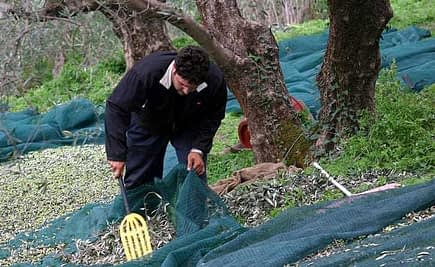A recent study commenced by the National Bank of Greece (PDF) regarding Greek olive oil presented interesting new findings and brought some old findings to the surface again.
Olive oil plays an extremely important role in the Greek economy, as it represents 11 percent of the total agriculture production in terms of value. In 2009, a total volume of 370,000 tons counted for 0.3 percent of the gross domestic product (GDP), whereas in Spain was 0.2 percent and in Italy 0.1 percent.
Greece excels in terms of quality, since approximately 75 percent of the Greek olive oil is extra virgin, in contrast with 45 percent in Italy and 30 percent in Spain (mainly due to the special morphology of the country).
However, producers in Greece have not been able to fully grasp the opportunity and thrive. Instead there is a decline in the olive oil production which represented 16 percent of global production in 1990 to 12 percent in 2009. The causes for this, the report explained, can be found in structural weaknesses in all of the production stages; processing, standardization and promotion.
The fragmentation of the olive oil industry disfavors any attempts to increase production and equally undermines attempts for a dynamic global promotion. Moreover, the diminishing European Union subsidies will have an additional negative effect. And last but not least, despite the financial incentives for the oil mills to adopt the two-phase processing technology, the majority of the mills still utilize the three-phase production system which implies higher costs (0,19€/kilo compared to 0,16€/kilo for the two-phase system).
The solution? First, cut expenses by achieving economies of scale via consolidations and focusing on highly productive areas like Crete and Peloponnesus. Second, the report urges, standardize: The annual turnover of oil standardizing companies in Greece is only €0.5 million, while in Italy it sums up to €1.5 million and it sky-rockets in Spain to €7.5 million. So avoid selling bulk olive oil and make an efficient turn to larger quantities of standardized olive oil, which means better quality controls and the creation of a ‘critical mass’ to properly advertise, promote and export olive oil.









